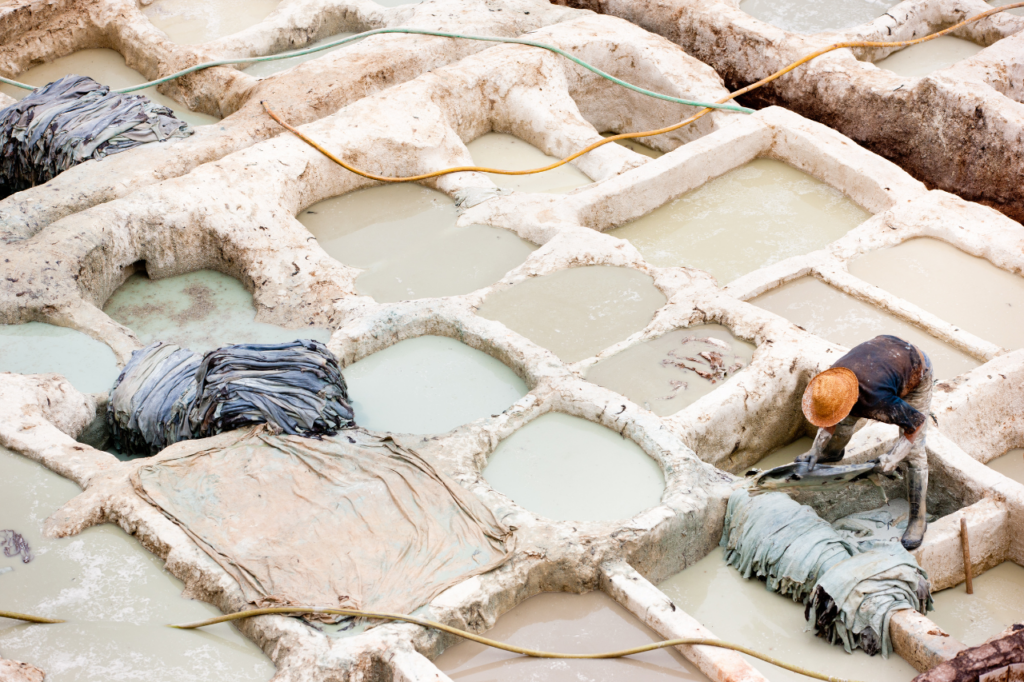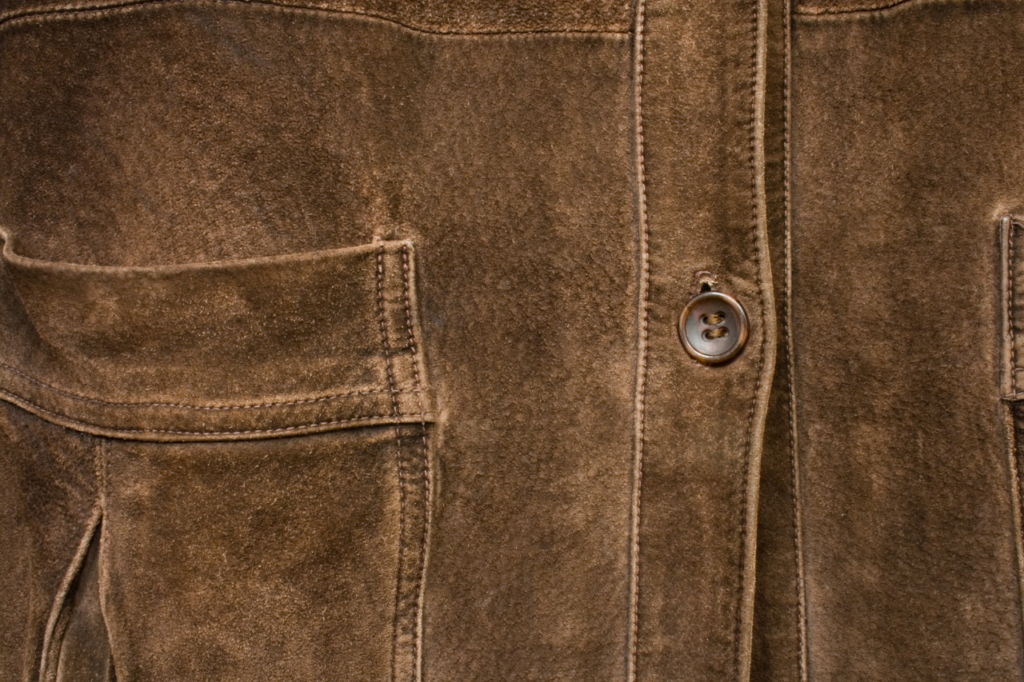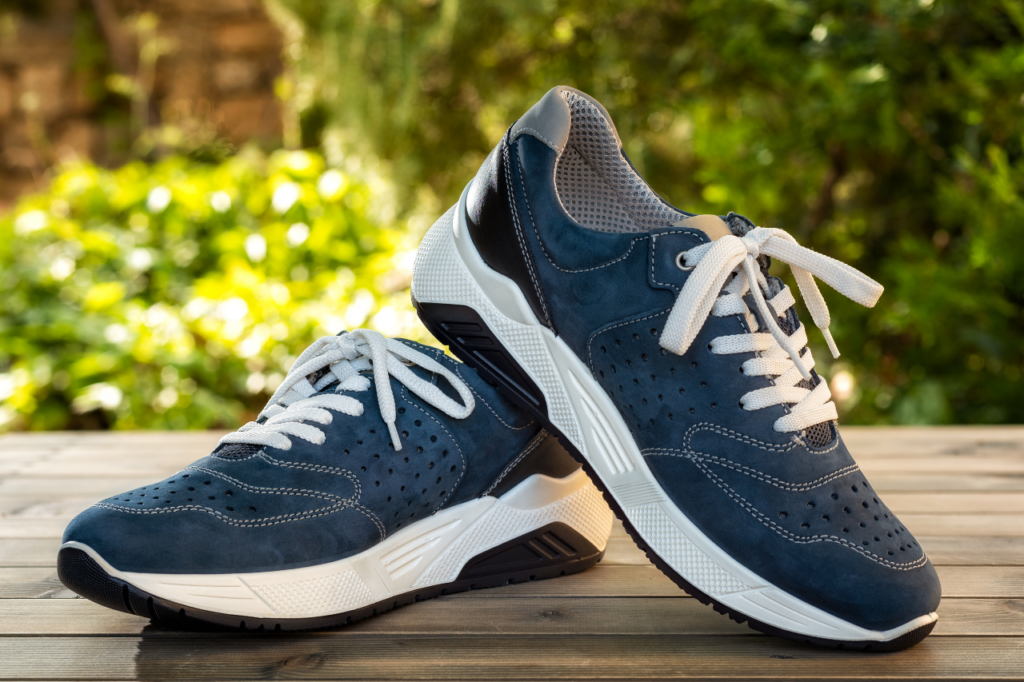
Leather or hide comes from animal skins. It is a natural material that is durable and long-lasting if properly cared for. It is breathable, soft and pliable, making it suitable for footwear, for example, as it adjusts to the shape of the foot. Leather changes colour as it ages and often wears out naturally over time.
We have been using animal skins for a long time. Back to hunters and gatherers, we have been preparing skins according to our needs.
Most leather products today come from cows, but pigs, goats, sheep, reindeer and elk are also common. However, skins can come from almost any animal, such as crocodiles, fish, kangaroos and stingrays.

Animal hides need to be treated through a process called tanning to become durable and not rot. In the past, fresh hides were left to dry in the sun, softened using animal fat and brains, then salted and smoked. Although we use similar processing steps today, the methods are different.
First, the animal skin is dried or salted to prevent it from rotting on the way to the tannery. There, the hair, i.e. the coat, is loosened by a lime bath, and then meat residues and any remaining hair are removed by a machine. Tanning can then be done with fat, vegetable or chrome. Traditional tanning also includes techniques using alum or urine. Fat tanning uses the animal’s brain, fish oil, or other fats to produce soft and waterproof leather, which has poor insulating properties against cold.
Vegetal tanning uses plant elements rich in tannin, such as roots, bark, leaves and fruits. Tannin, also called tannic acid, is a substance found in tea and grapes that produces an astringent sensation in the mouth when it interacts with proteins. Most commonly, bark from spruce and oak trees is used and boiled in water to form a solution that treats the hides. The method produces durable, soft and water-resistant leather, but the colouring can be uneven, and the process can take several days to months. Today, 90% of tanning relies on the heavy metal chromium due to its speed and cost-effectiveness. The process takes about one day, making it cheaper and producing more consistent results. We call this method “wet blue” because the chromium gives the water and chemical bath treatment of the hides a blue colour. Chrome tanning is known to be harmful to nature and its biodiversity and has health risks for workers. If the leather needs colour, it gets dyed after tanning.

A leather hide has two sides. The outside of the hide covered in hair is the grain, which produces a leather type with a soft and smooth surface. The inside of the hide is called suede and has a sanded to soft and evenly roughened surface. Suede is more porous than leather, making it harder to keep clean. If you sand the grain side (the outside), you get nubuck, which is velvety and similar to suede but has a shorter and rougher surface. In English, suede is called “suede’, from the French’ gants de suede’ (gloves from Sweden).
We use leather and skins in clothing, footwear, accessories such as gloves and bags, and furniture such as sofas and car seats. They are also found in interior decoration and products such as handles, mobile phone cases and book covers. Leather requires care, including greasing or waxing, and should be dried at room temperature if it gets wet.


Challenges & Environmental Impact
The durability of leather depends on several factors, such as animal husbandry, species, hunting methods, and preparation techniques.
Conventional livestock farming generally faces significant challenges in terms of both animal husbandry and use of resources. It requires large amounts of land and water and the use of fossil fuels. In addition, exploiting agricultural land to grow animal food can lead to deforestation, eutrophication and soil and water pollution. Leather and hides can be a by-product of meat production, reducing waste. At the same time, it can be a primary product that bears the main responsibility for the challenges of animal husbandry.
Tanning with heavy metals uses chromium-3, a variant considered non-hazardous. However, improper handling can convert it into chromium-6, a toxic substance that harms the environment and poses carcinogenic and allergenic risks. Other heavy metals, such as biocides, formaldehyde, and volatile organic substances, can also be used in production and have similar effects. Much of the leather and skins produced are tanned outside the EU in countries with poor environmental and occupational health and safety regulations. Untreated wastewater and the incineration of leather scraps and sewage sludge can release chromium-6 into the environment, polluting rivers and lakes and affecting the biodiversity of nature, including humans.
A major advantage of leather is its durability, which means it can last a lifetime if properly cared for. However, the high use of chemicals in conventional manufacturing affects the biodegradability of leather. Even impregnation, greasing and waxing products for leather care may contain chemicals that hinder decomposition.
Vegetable-tanned leather is considered better for the environment and humans.
Sources
Amanda Tunholm – Ett hantverk som går hand i hand med döden ![]()
Britannica – Leather ![]()
Impactful Ninja – How Sustainable Are Leather Fabrics ![]()
Läderspecialisten – Fakta om olika lädertyper ![]()
Masterclass – Fabric Guide: Learn About Leather ![]()
Naturkompaniet – Läder ![]()
Naturskyddsföreningen – Så tillverkas läder ![]()
Wikipedia – Tanning Leather ![]()
November 2024, TÄNKOM | Revised November 2024, RETHINK



